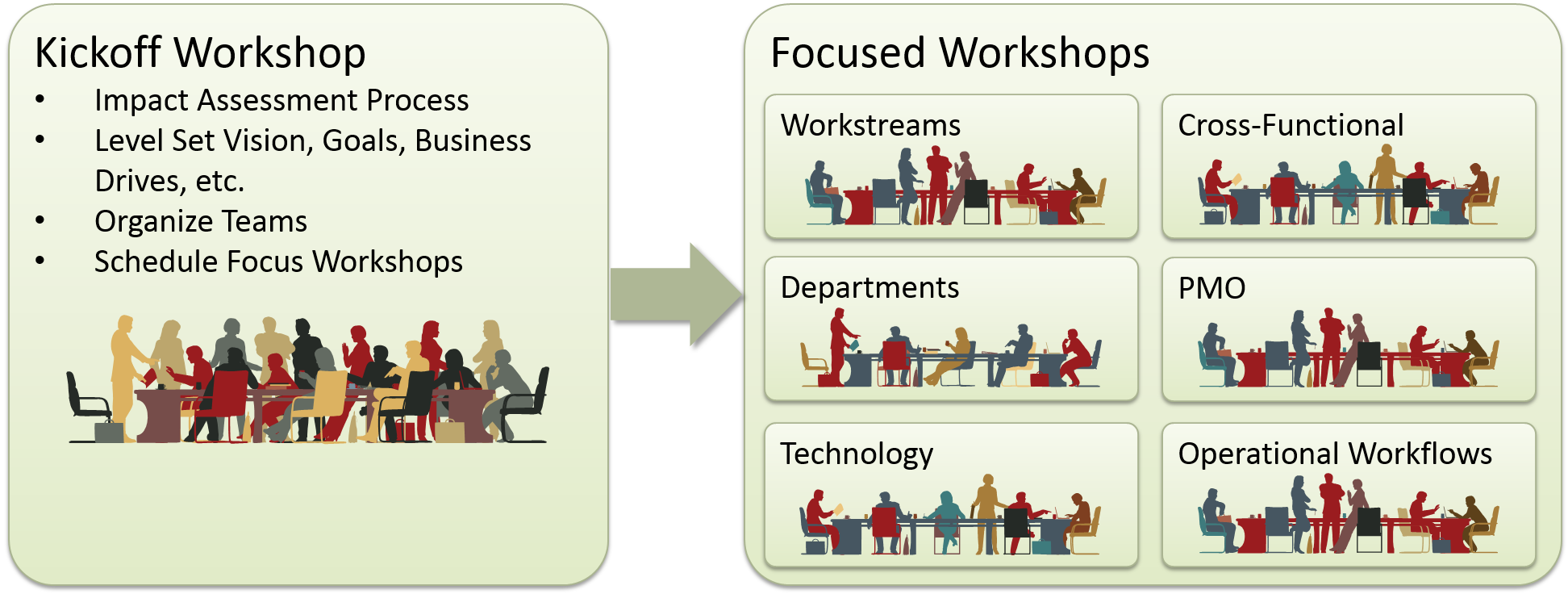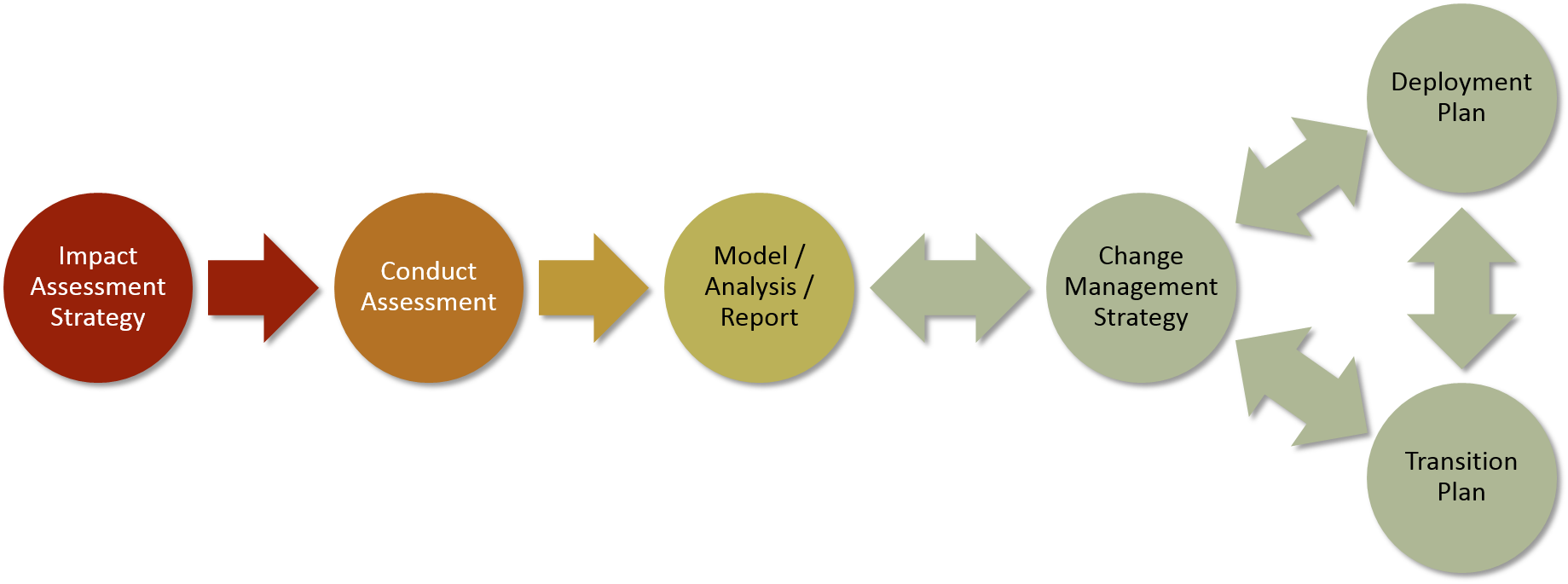Change Impact Assessment
A Change Impact Assessment is a key tool in developing your Change Management Strategy. The ArborSys approach to change impact assessment, models your change initiative to provide you with actionable change impact data early in your project.

What is Change Impact Assessment?
Virtually every project has a change component. Changes can come in the form of technology, workflows, processes, etc. When we refer to change impact though, we are usually talking about people impact. How are the employees, suppliers, and partners impacted by the changes associated with the project?
Some changes are big. Some are small. The types of change impacts and how they affect people differ from project to project. The closer you are to implementation the easier it becomes to see what the impacts will be and how you can address them. However, what happens if you need to understand the impact of change early in the project? What if the project is so large, important, or transformational, that it could affect business operations? How can you assess the impact on the business units? Which are affected the most? How can you do an assessment without knowing what specific processes, technology, data, etc., are changing, in what way, and by how much? A change impact assessment defines how changes affect target audiences as they transition from the current to target state. The impact assessment describes the high-level changes in organization, skill/knowledge, culture, process, and system requirements and how each change is expected to affect key stakeholder groups.
Why Assess Change Impact
We know that many projects fail for lack of effective change management. We know that change management is every bit as important as project management. Understanding the scope of a project is key to successful project management as well as change management. A change impact assessment provides that scope.
Understanding change impact is especially important for implementation planning. If you know how departments, functions, workgroups, and specific jobs are impacted, you can identify the potential effect on ongoing business operations. This gives you more information for implementation planning and allows you to develop contingency plans. It is especially important to understand how the impact is distributed over the implementation phase. Are groups or individuals subject to gradual or constant impact? Does it come in waves? If so, how frequent are the waves?
The specific details within the assessment also have value. The amount of impact from any one component, such as technology, varies from project to project. However, understanding those components and the relationship to overall impact is also useful in implementation planning. It may be possible to break the implementation into components or phases to reduce the overall impact. For example, deploying a new technology before implementing process or workflow changes allows time for the technology to be assimilated before the process changes are introduced.
Another important benefit of change impact assessment is identifying the critical points in implementation. There may be operations critical areas where a proof-of-concept or a pilot should be conducted to facilitate the transition and minimize the impact.
Finally, change impact assessment, especially if done early, allows you to identify the most important areas to address with change management activities.
The ArborSys Approach
Our Change Impact Assessment Methodology uses inputs from your managers and subject matter experts (SMEs) to develop a multi-factor model that measures change components and change impact in various ways. To determine the right factors, we begin with a thorough understanding of you initiative and the critical success factors. We marry this with an understanding of the critical parts of your organization and operations to identify where change impacts may be most critical.

We conduct facilitated workshops with your business and technology leaders and SMEs to develop a change impact model for your initiative. An initial workshop is held for everyone involved in the project. It is used to level-set understanding of the project vision, goals, and high-level plan. This sets the stage for follow-on workshops addressing critical change factors and relationships. Workshops are organized specifically for the needs or your project. They are usually comprised of cross-functional teams.

After the workshops, the model is populated with all data gathered. Common model data elements include:
- Process
- Technology
- Culture
- Organization (Re-organization)
- Data
Some data elements may need additional examination. For example, technology may have automation and platform aspects that have different impacts. The model is updated, as needed.
Model data are gathered and organized in various ways. It can be by department, process, workflow, function, or any other criteria appropriate for your project. This allows the data to be analyzed and presented in different views. For example, the total change impact for one department could be viewed by process or workflow. Similarly, how one workflow or process affects each department could be examined. Drilling into the data allows for exploration of each change component, department, process, etc.
The impact assessment is particularly important for implementation planning. When mapped against the deployment and transition plan, the sequence and magnitude of impact on each department or work group can be projected as different processes, technology, and other changes are introduced.

The ArborSys Change Impact Assessment Methodology is a powerful tool for developing your change management strategy and developing implementation plans that mitigate disruption to ongoing business operations. ArborSys can help. We have the people, process, and expertise to support your organizational initiatives.
